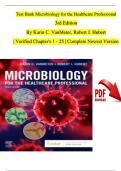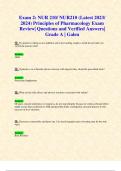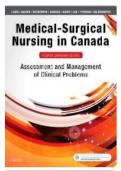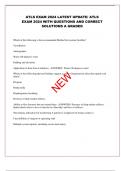Exam (elaborations)
Test Bank For Microbiology for the Healthcare Professional, 3rd Edition By VanMeter, All Chapters 1 - 25, > Download as a Pdf File <
******** INSTANT DOWNLOAD AS PDF FILE ******** Test Bank For Microbiology for the Healthcare Professional, 3rd Edition by VanMeter, All Chapters 1 - 25, > Download as a Pdf File < 1. Test bank questions for Microbiology for Healthcare Professional 3rd Edition VanMeter 2. VanMeter Mic...
[Show more]












